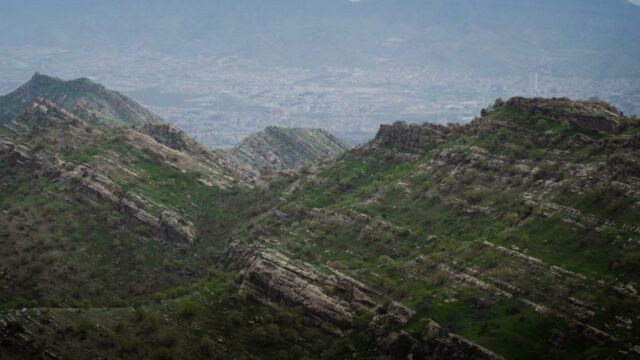2000-year-old lost royal city discovered in Iraqi Kurdistan

Scientists believe they may have discovered a lost royal city in modern Iraqi Kurdistan.
It is believed that the lost royal city of Natounia, otherwise known as either 'Natounia on the Kapros' or 'Natounissarokerta,' has been discovered in modern Iraqi Kurdistan.
Discover our latest podcast
A city lost to antiquity
Previously, the existence of Natounia was only known due to it being documented on seven bronze coins dating back to the first century BC. Knowledge about the royal city is 'markedly incomplete,' but it is thought to have been part of the Parthian Empire and one of many cities in the Middle East that are lost to antiquity, as reported by Sky News.
More under this adMore under this adArcheologists now believe they have discovered its location which is on the site of the stone fortress Rabana-Merquly in the Zagros Mountains. According to their findings, published in the journal Antiquity, the fortress was a major regional centre of the Parthian Empire, which spanned over parts of Iran and Mesopotamia around 2,000 years ago.
A 2,000-year-old fortress built on a mountainside in what’s now Iraqi Kurdistan could be part of a lost royal city called Natounia. https://t.co/HY3kjftIum
— CNN (@CNN) July 20, 2022
A military and sanctuary complex
Parts of the fortress have been 'exceptionally preserved' and contain structures that indicate the site had a military use. These include the remains of seven rectangular buildings that presumably served as barracks.
Researchers also discovered a sanctuary-like complex where heavy rains would form an ephemeral waterfall, at the base of which was a monumental stone structure. Here, there was also a staircase cut into the bedrock, and a small altar. Archeologists say the prominence of water suggests that worshippers may have prayed to the Zoroastrian Iranian goddess Anahita, who was venerated as a divinity of 'the Waters.'
More under this adMore under this adAccording to the researchers, the fortress may have been used to carry out trade with the pastoral tribes in the backcountry, maintain diplomatic relations, or exert military pressure, as reported by Express.
Dr Michael Brown, a researcher at Heidelberg University who lead the team of archaeologists, said:
The considerable effort that must have gone into planning, building, and maintaining a fortress of this size points to governmental activities.More under this adMore under this ad
Read more:
⋙ Explorers discover world’s largest underground city in Turkey
⋙ Rare mosque that's more than 1200 years old discovered in Israeli desert
⋙ Secret passage that's over 3,000-years-old opened for the first time in Peru